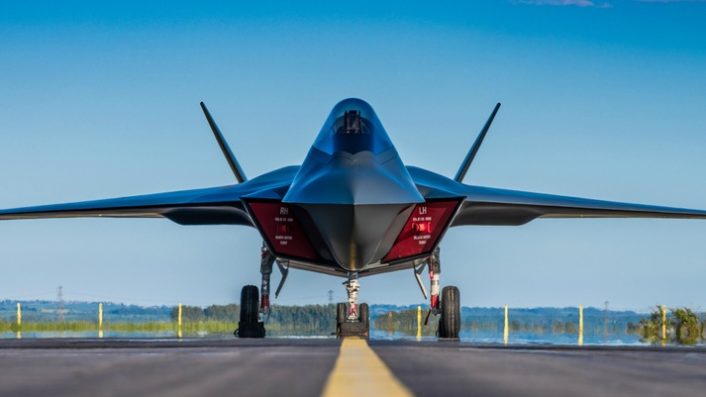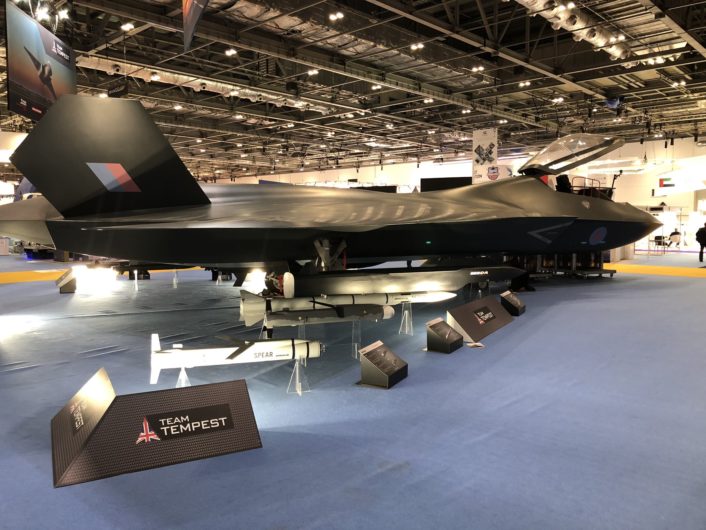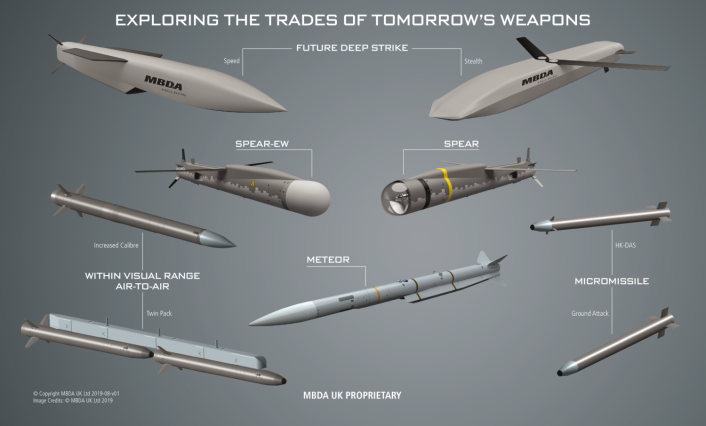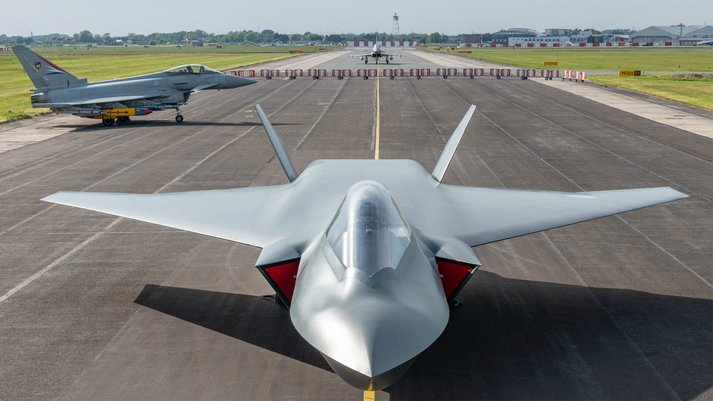Let’s talk about Italy officially joining Tempest Programme.
On Sept. 10, Italy has officially become the latest member of the Tempest Programme, the project to develop a next generation multirole aircraft.
Gen. Nicolò Falsaperna, Italy’s Secretary General of Defense, and Sir Simon Bollom, CEO of Defense Equipment & Support, as National Armaments Directors of Italy and the UK, signed a Declaration of Intents to collaborate in the Tempest program at DSEI (Defense & Security Exhibition International) of Intents to collaborate in the Tempest program.
“The Declaration of Intent commits both Governments to further develop their capabilities in the Combat Air sector. It is the result of a joint Government Feasibility Study, launched following the publication of the UK’s Combat Air Strategy at the Farnborough Air Show in July 2018,” says the Italian MoD press release.
According to the Italian Defense officials, the study came to the conclusion that the UK and Italy are natural partners in the Combat Air sector, also thanks to the collaboration between in the Defense field and in particular between the Italian Air Force and Royal Air Force that employ the same aircraft: both are equipped with the Eurofighter Typhoon and the F-35 (previously, for three decades, also the Tornado fighter bomber). The employment of the same weapons systems has allowed the two air arms to develop a common vision on doctrine, training and grow a similar operational experience: this means that Italy and the UK share objectives and know how that is needed to work on a next generation aircraft. Moreover, the aerospace industries of both nations have been cooperating for 50 years, in the development and support of combat aircraft in the Panavia Tornado and Eurofighter Typhoon program.

Tempest is a collaboration between the British Government and industrial partners BAE Systems, Rolls-Royce, MBDA and Leonardo. Sweden officially joined the program in July 2019, thus Italy is the third nation to partner on the programme.
The UK plans to invest 2 billion GBP in Combat Air Strategy and the Tempest to fund the early stages of the program, but involvement of foreign partners bringing money, technology and markets to the table is considered crucial to make the project viable.
“Early decisions around how to acquire the capability will be confirmed by the end of 2020, before final investment decisions are made by 2025. The aim is then for a next generation platform to have operational capability by 2035,” said the British MoD in the official press release following the announcement at FIA 2018.
Here’s what I wrote back then:
Considered the time required to develop 4th and 5th generation aircraft (and in particular the controversial F-35) an (initial) operational capability in “just” 17 years from now seems a quite optimistic (or “aggressive”) deadline. For sure the Tempest is intended to eventually replace the Eurofighter Typhoon by the late 2030s or early 2040s. Moreover, the current plan does not include the possible delays induced by negotiations and onboarding of other European partners: it’s not clear what France and Germany will do with their own 6th generation aircraft announced last April at ILA18, but Italy (already supporting the new UK’s aircraft by means of Leonardo, that will be responsible for avionics and EW suite), among the others, is a natural candidate to join the project and invest money and skills in the Tempest rather than the “système de combat aérien du futur,” or SCAF, that appears to be a more “closed” joint venture at the moment.
Therefore, the Italian involvement in the Tempest was quite predictable and pretty obvious for several reasons, some of those highlighted by the Italian MoD in the first official statement after today’s signing. First of all, the Italian and Royal Air Force share the same need to find a replacement for the Eurofighter Typhoon, and have already inducted the F-35 as their first 5th generation aircraft that will integrate with both the F-2000 and its 6th gen. replacement. Furthermore, the industrial team involved since the beginning in the Tempest program already included Italy’s Leonardo, thanks to its large-scale operation in the UK.
Finally, both nations are F-35 partners: Britain is a Tier I and Italy is a Tier II partner in the F-35 program. Both nations industries participate in the manufacturing of some of the aircraft’s most critical systems. Some of the expertise collected by the companies working on the Lightning program will probably useful in designing 6th generation technologies for the Tempest.

Meanwhile France and Germany have started working on their own Future Combat Air System, whose mock up was unvelied at Paris Air Show this year. The prospect is once again of European neighbors working on parallel rival developments as happened with the Eurofighter, Rafale and Gripen programs.
The IAI think tank in Rome advocate merging the projects in the mid-term to avoid that, because “if the programs remain separate, neither will have a sufficient market, and we will need to depend on an uncertain level of exports.”
Still, what will happen in the next years is at least unclear especially considered that the UK is about to leave the EU without a trade deal.
Back to the Tempest, here’s what we know thus far:
Dealing with the shape of the Tempest concept model, it bears some resemblance with current stealth fighters, especially the American F-22 (the front section) and F-35: the aircraft features a cranked kite design similar to the one used by most of the UCAV (Unmanned Combat Aerial Vehicle) demonstrators such as the X-47B or the nEUROn, but the presence of the canted vertical stabilizers indicate “a preference for fighter-like agility since they aid horizontal stability during manoeuvres, especially in extreme flight regimes. However, they also limit the extent to which an aircraft’s radar signature can be reduced, especially against low-frequency ‘anti-stealth’ type radars,” commented Aerospace and defence analyst Justin Bronk from the Royal United Services Institute (RUSI). In other words, the Team Tempest seems to prefer agility against low-observability, as if stealthiness will become less important than ability to maneuver against future missiles and enemy aircraft in the future scenarios.
[…]
Generally speaking, the Tempest’s shape clearly reminds the BAe Replica, a British stealth aircraft model developed by BAe in the 1990s and used for radar testing for the FOAS (Future Offensive Air System) a study aimed at finding a replacement for the RAF Tornado GR4. After the program was scrapped in 2005, it was replaced by the Deep and Persistent Offensive Capability (DPOC) program that was itself cancelled in 2010, following the UK military’s spending review. The Taranis UCAV (Unmanned Combat Air Vehicle) a semi-autonomous pilotless system able to carry a wide variety of weapons, including PGMs (Precision Guided Munitions) and air-to-air missiles, emerged as the eventual successor of the FOAS.
Although the wings appear to be different, the BAe Replica model features twin engines, diverterless supersonic intakes and canted fins that can be found in the Tempest. Compared to the BAe Replica the Tempest appears to have a larger fuselage (along with the larger wing) that would allow for increased fuel and payload.
[…]
Noteworthy on the Tempest is also the presence of a cockpit to accommodate a pilot: the 6th generation aircraft will be “optionally manned”.
Some interesting updates about the development of Tempest come from MBDA that has published an infographic showing some of the weapons the new 6th generation aircraft will be able to carry:

“In the domain of Survivability in Attack and Control of the Air, working closely with Leonardo and BAES has led to MBDA developing concepts for a Hard Kill Defensive Aid System (HK-DAS) capable of tracking, targeting and intercepting incoming missiles in high threat environments,” says the latest MBDA release.
“Leveraging commonality, modularity and reuse of the HK-DAS concept, MBDA are exploring a small form factor, scalable, Ground Attack Micromissile capability to enhance the Tempest system in the Close Air Support (CAS) role for Persistence in Attack.
Drawing upon the prior weapons integration experience of both MBDA and BAES, innovative payload bay and launcher concepts facilitate an improved weapon load out, like the twin WVRAAM (Within Visual Range Air-to-Air Missile) concept, or increased weapon release envelopes and the flexibility to introduce enhanced weapons capability like the increased calibre WVRAAM concept.”
The Tempest is one of the most important and interesting aerospace programs today. We will continue providing updates on it as new details become to surface.









